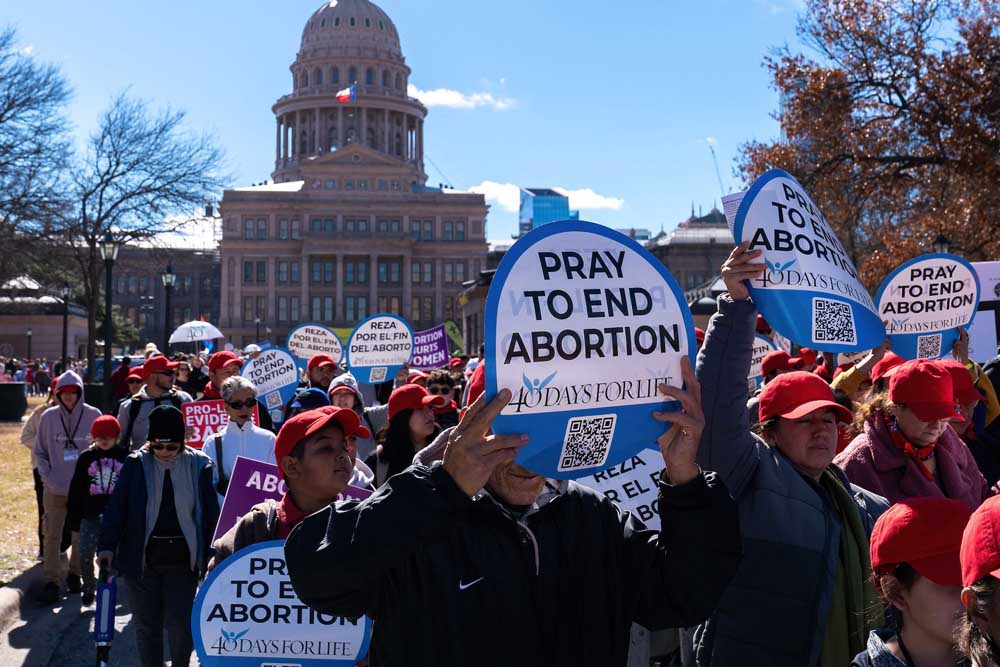Commentary: More infants are dying in states with abortion bans
Published 9:00 pm Wednesday, February 19, 2025

- Anti-abortion rights supporters take part in a "Rally for Life" march and celebration outside the Texas State Capitol on Jan. 27 in Austin, Texas.
Two new studies in the Journal of the American Medical Association drive home the devastating effects abortion bans have on the lives of women and children: Severe restrictions lead to many more unplanned births, as well as more infant deaths.
That outcome isn’t a surprise. It mirrors what was gleaned from early data on infant mortality in Texas, the first state in the country to impose a strict ban. That law, which bans nearly all abortions, was passed in 2021.
Trending
However, the studies, which separately examined infant mortality and fertility rates in states with the strictest abortion laws in 2023, offer important nuance by pinpointing who is most affected by shrinking access to reproductive health care.
And they are a harbinger of what’s to come. The research must be viewed in the context of the fast-evolving landscape for abortion access in the U.S. The analyses capture the first pregnancies and births after the Supreme Court overturned Roe v. Wade in June 2022. More bans have gone into effect since then, and more efforts are underway to make it harder for women to access abortion care. In other words, things could get a lot worse.
Researchers found that abortion bans in 14 states led to nearly 22,200 additional births in 2023. During that same period, almost 480 more infants died, a 6% increase, in states with strict prohibitions. Researchers used statistical modeling to estimate the number of expected infant deaths.
Unsurprisingly, most births — and deaths — occurred among women who were younger, poorer, less educated, non-White, and lived in the southern states known for having some of the worst health outcomes for women and infants.
Black infants, for example, already are more than twice as likely as White infants to die during their first year. Underlying that health disparity are structural and economic inequities that make it less likely for Black mothers to receive timely prenatal care, which increases the chances of complications from low birth weight. Abortion bans worsened that statistic. Black infants died at a nearly 11% higher rate than would be expected without abortion restrictions. That translates into 265 more infants dying.
The data also clarifies that lawmakers can’t simply carve out exceptions to the bans to solve the problem. Bans are the problem. Yes, some of the increase in infant mortality can be attributed to congenital anomalies — birth defects like heart, brain or spinal cord abnormalities. These are conditions that might prompt a woman to terminate a pregnancy, but because of bans, she’s forced to carry it to term, knowing it will end in heartbreak.
Trending
There’s ample reason to fear that the situation will worsen in 2025 and beyond. The researchers could only analyze data available through the end of 2023. But the continuing fight over reproductive rights since then suggests there could be more unwanted births and, consequently, more infant deaths.
For example, in May 2024, Florida enacted a six-week ban. Before the ban, Florida had provided critical access to abortion care for women across the South. In the first 15 months after Roe was struck down, Florida clinics provided an additional 15,200 abortions, many for women traveling from states with bans, according to data from the Society of Family Planning.
One of the most popular and accessible forms of termination, medication abortion, is also under attack. Activists are targeting mifepristone, one part of a two-pill regimen for a medication abortion. In 2023, more than 60% of procedures were medication abortions, up from 39% in 2017. The increase is primarily due to a 2021 decision by the Food and Drug Administration to allow the medication to be prescribed via telehealth and dispensed by mail.
The new JAMA papers make clear the unconscionable toll that existing barriers to abortion care have already taken on women and families. Brace yourselves for even more gruesome statistics in the years to come.








